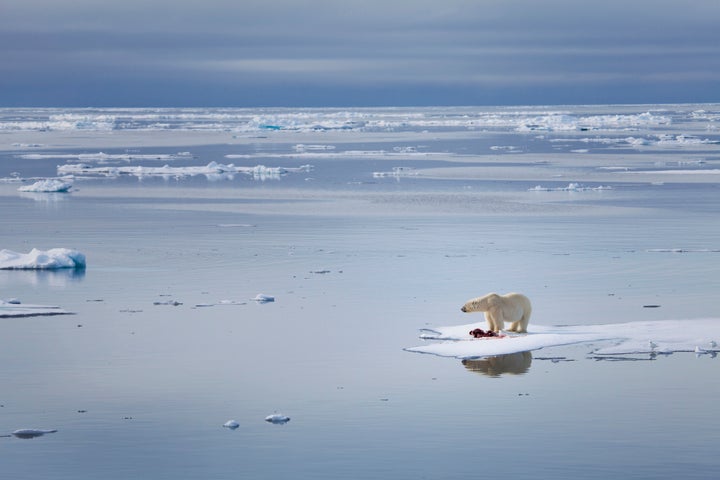We all know that climate change is causing the Arctic ice caps to melt at record-breaking speeds, but now scientists have come up with an innovative (if not slightly farfetched) way to potentially save our polar regions.
Currently, the most widely-promoted solution to the problem is to ask humans to stop using fossil fuels.
But Steven Desch from Arizona State University told The Observer this strategy needs rethinking: “It is going to need a lot more than that to stop the Arctic’s sea ice from disappearing.”

Instead, Desch and his team want to replenish the shrinking glaciers by building ten million wind-powered pumps on top of the ice caps.
These pumps would be turned on during the winter months and would work by drawing water up from the oceans - lying hidden under the ice - and depositing the saltwater on the surface.
This water would then freeze in the bitter Arctic cold, creating an additional layer of ice on top of the existing ice and ultimately thickening the cap.
Desch believes that this groundbreaking technique could potentially add as much as an extra metre of sea ice to the current deposits.
Although that might not sound like a lot for the effort required to input ten million pumps, given the current thickness rarely exceeds two or three metres, this change would have a measurable impact.
“Thicker ice would mean longer-lasting ice. In turn, that would mean the danger of all sea ice disappearing from the Arctic in summer would be reduced significantly,” says Desch.
They have also proposed a price tag for this venture, and ringing in at approximately £400 billion, it is no cheap investment.
But perhaps an inevitable cost of maintaining our planet’s future, as the current trend for melting shows no signs of slowing down.
Only last week, researchers announced that there was less Arctic sea ice in January than in any other January since records began, continuing a trend that began in October.
The average extent of Arctic sea ice last month was 5.17 million square miles, 100,000 square miles lower than January 2016, the previous record holder.
That drop is equivalent to an area of ice large enough to cover all of England. Twice.
Better get building those pumps.
